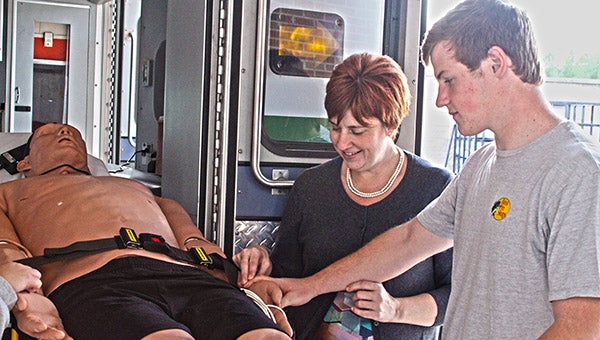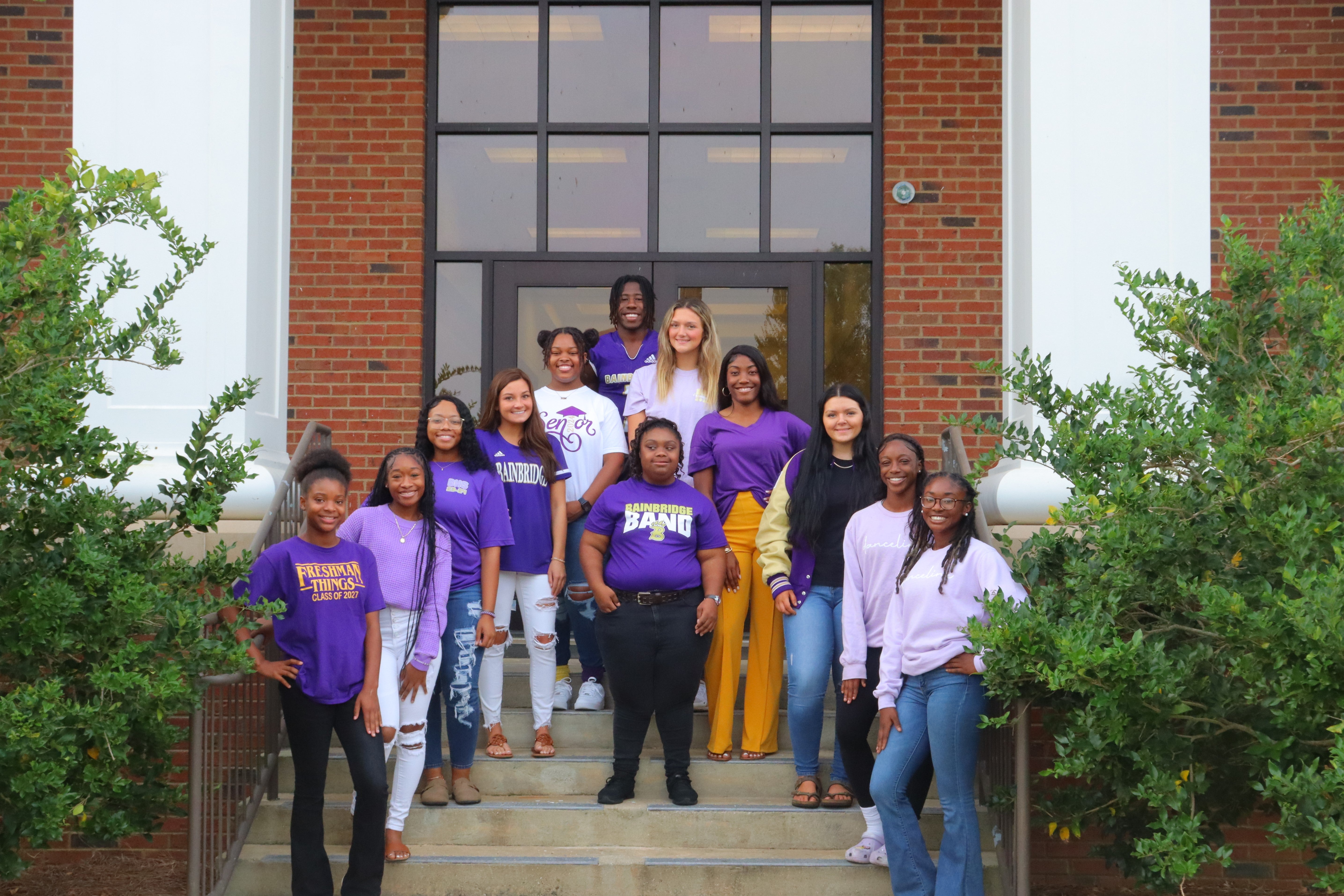BHS students learn about BSC healthcare career programs
Published 10:33 am Thursday, December 11, 2014

Angela Rozar, BSC Chair of Practical Nursing and Allied Health & Nursing Instructor, teaches Bainbridge High School senior, Josh Williams, how to properly check the patient’s pulse.
By Susanne Reynolds, BSC Media Coordinator
Several Bainbridge State College Health Sciences and Professional Studies faculty members recently loaded one of their high-fidelity human simulators and took an ambulance trip to Bainbridge High School to showcase various healthcare career programs to Bainbridge High School students in the Introduction to Healthcare Science class.
Tatyana Pashnyak, Associate Professor, represented Medical Administrative Technology and Health Information Technology programs. Charles Avery, the Paramedic/Emergency Medical Technician Instructor, told the students about the advantages of the EMT Program at BSC. Angela Rozar, Chair of Practical Nursing and Allied Health, answered the students’ questions about nursing programs.
The main purpose of the visit was to inform BHS students interested in health care careers about various program options at BSC, both while still in high school (via dual enrollment) and after graduation. This was one of many planned visits to local high and middle schools.
“We have two goals in our programs,” said Ms. Pashnyak. “One is to equip students for the professional world. They will have the credentials, skills, and certifications to help secure jobs. And two, the programs are designed to allow our students to graduate faster.”
Beginning Fall 2014, a new program, Health Information Technology (HIT), is available to students. There is a projected shortage in the supply of trained HIT professionals in health computer networking, software development, healthcare sales, and customer service. Therefore, HIT graduates will have higher than average job opportunities.
HIT students will have an opportunity to earn one year of professional medical coding experience through the online internship course, certified by the American Association of Professional Coders (AAPC); a Certified Professional Coder (CPC) certification; and a HIT-Pro certification, certified by American Health Information Management Association (AHIMA).
Medical Administrative Technology (MAT) program is also available and focuses on preparing administrative healthcare personnel, such as hospital clerks and medical front office staff. MAT students will be eligible to earn Certified Medical Administrative Assistant (CMAA) certification.
Charles Avery described the many advantages of pursuing an EMT program. “If you start the EMT program while in high school, you will only be two months away from being an EMT,” Avery said. “Being an EMT will help you to pay for a degree in any field if you chose to go that route. You must be dedicated.”
Another advantage Avery spoke about was that the instructors in the program are also working in their communities as EMTs and paramedics. He said, “We teach people to become EMTs. No matter what program you choose in the School of Health Sciences and Professional Studies at Bainbridge State, chances are you will see instructors working in the community, too.”
The EMS Professions Diploma Program (EMT and AEMT combined) is now available and approved for full financial aid. Registration is now open.
There will be one new class starting in spring 2015. This is a day class (9 a.m.-12:30 p.m.) on Mondays and Wednesdays, which will be held on the main campus in Bainbridge. The program will not be offered at the Early County campus this upcoming semester.
Additionally, Angela Rozar, BSC Chair of Practical Nursing and Allied Health & Nursing Instructor, answered the students’ questions related to nursing programs.
BSC is offering a Nurse Aide Technical Certificate of Credit (TCC) program, that allows student to earn CAN credentials, Practical Nursing Diploma program (LPN credentials), and an Associate of Science in Nursing program (ADN credentials). Students must be highly dedicated to pursue a nursing program but career benefits and employment opportunities are plentiful.
After the presentations, Avery, Rozar, and Pashnyak gave students an opportunity to explore the BSC EMT ambulance and taught them safety skills with one of the many high-fidelity human simulators used to enhance instruction in BSC healthcare programs.
In addition, HIMT 1100 and HIMT 1150 courses (available now) teach students how to use simulators, such as programming and running various healthcare simulation scenarios. Many U.S. medical and nursing programs, as well as hospitals use simulators for training prior to allowing students to work with real patients, thus decreasing the risk of mistakes and increasing patient safety.


